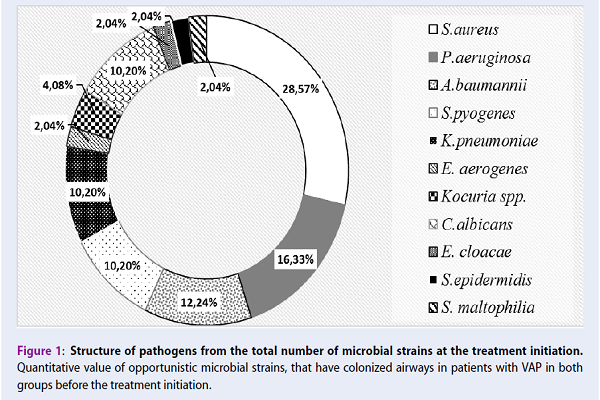Clinical, microbiological research of the effectiveness of inhalation use of quaternary ammonium antiseptic in the prevention and treatment of infectious respiratory complications in critically ill patients
DOI:
https://doi.org/10.15419/bmrat.v5i12.504Keywords:
Antiseptics, Decamethoxine, Respiratory infection, VAPAbstract
Introduction: The aim is to study the microbiological and clinical efficacy of decamethoxinebased quaternary ammonium antiseptic inhalations in the complex management of respiratory infectious complications in critically ill children.
Methods: The use of inhalation of antiseptic medicinal decamethoxine (DCM) was studied in patients with ventilator-associated pneumonia (VAP) (n=30), of ages 12-18 years. All patients received standard intensive care according to the guidelines. Inhalations of 5 mL DCM (0.02%) antiseptic per inhalation TID for 7 days in combination with systemic antibiotic therapy were used in the study group (n=15). Clinical microbiological studies and assessment of Toll-like receptor (e.g. TLR-4) serum levels were performed in patients.
Results: The use of DCM inhalations along with systemic antibiotic therapy improved parameters of dynamic compliance by 3.4-fold and decreased lung resistance by 2.4-fold in patients after 48-72 hours of mechanical ventilation. The microbial spectrum of patients at the beginning of VAP was represented by gram-positive (S. aureus — 28.6%, S. pyogenes — 10.2%) and gramnegative (P. aeruginosa — 16.3%; A. baumannii — 12.24%; K. pneumoniae — 10.2%) pathogens. The pathogens were isolated in the monoculture (20.4%) and in microbial associations (79.6%). A significant decrease by 3 orders of magnitude (log (2.640.43) CFU/mL) in the microbial count in tracheobronchial secretions was determined after 7 days of additional use of DCM inhalations when compared to the initial levels of microbial colonization (p<0.001). The microbial spectrum of the respiratory tract was predominantly represented by S. aureus (27.78%), A. baumannii (11.11%) and E. cloacae (5.56%) in monoculture (61.11%), whereas the microbial count was 4 orders of magnitude higher in the comparison group, versus that of the study group (p<0.001), and was represented by microbial associations (93.33%). A strong correlation was found between the reduction of the gram-negative pathogen count and the decrease of TLR-4 serum levels (r-Pearson=0.893), that almost reached baseline levels after DCM inhalations, while TLR-4 levels remained 2 times higher than baseline levels after the use of systemic antimicrobial therapy alone (p<0.001).
Conclusion: The use of DCM inhalations in combination with systemic antibiotic therapy provides for an effective reduction of pathogen count in the respiratory tract, leading to the early (48-72h) improvement in lung ventilation and TLR-4 serum levels, and subsequent significant improvement of treatment efficacy in severe VAP patients.

Downloads
Published
Issue
Section
License
Copyright The Author(s) 2017. This article is published with open access by BioMedPress. This article is distributed under the terms of the Creative Commons Attribution License (CC-BY 4.0) which permits any use, distribution, and reproduction in any medium, provided the original author(s) and the source are credited.
